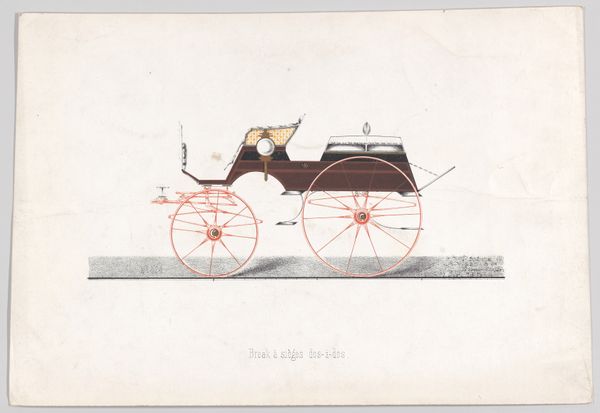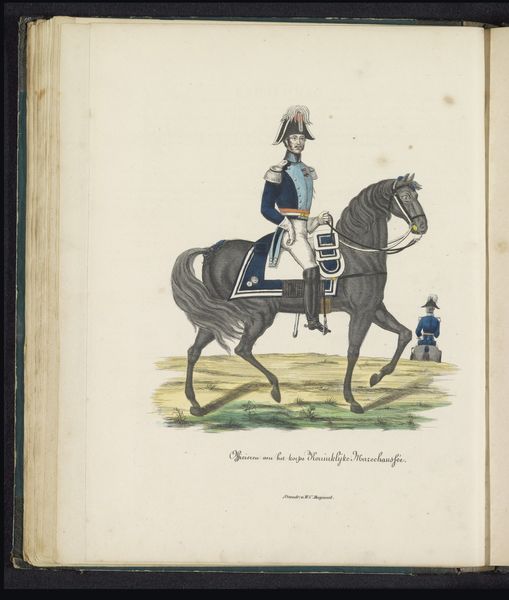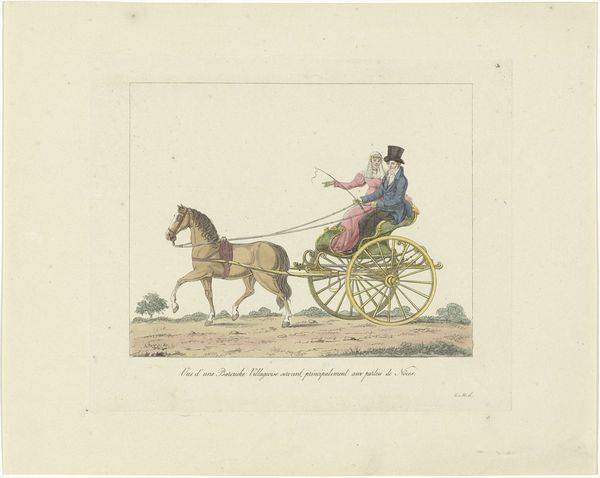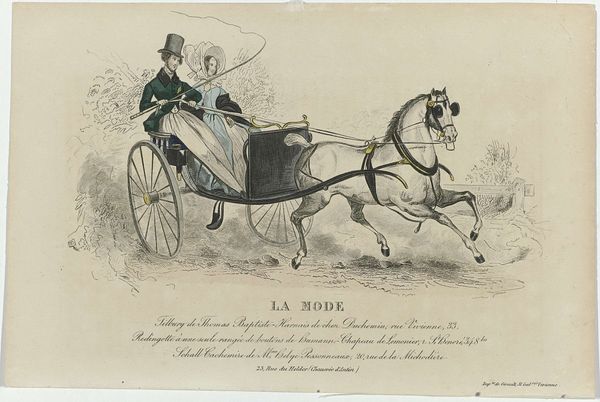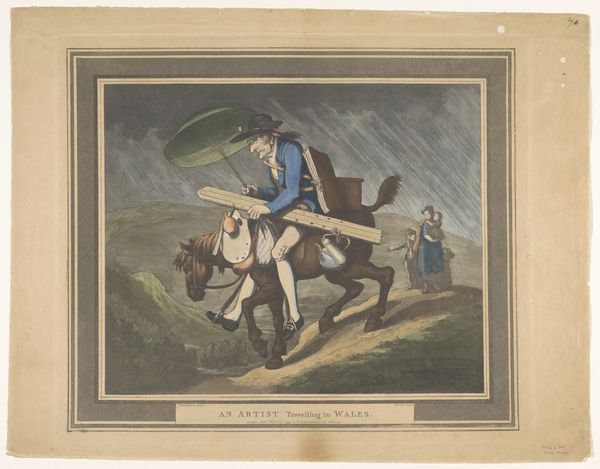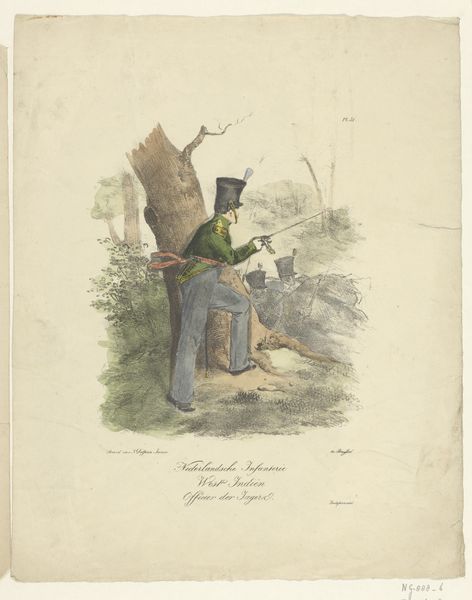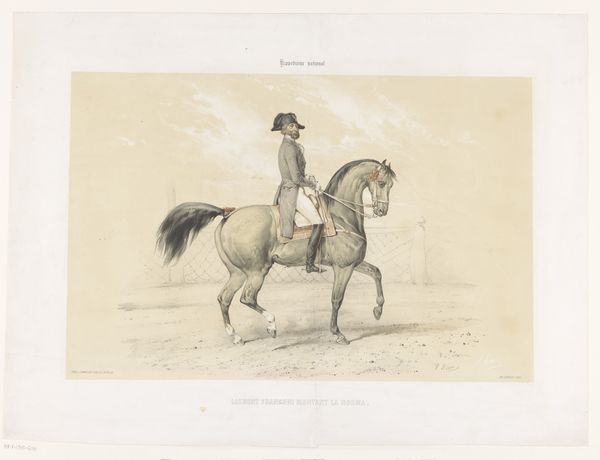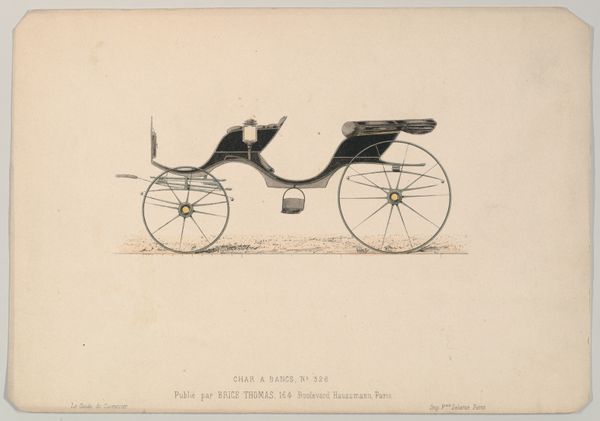
Dimensions: height 359 mm, width 277 mm
Copyright: Rijks Museum: Open Domain
Editor: Here we have Edmond Lavrate's lithograph, "Two Members of the National Guard in a Carriage," from 1863. I find it a little comical, with the exaggerated features, and somewhat… incongruous. What's your take on this piece? Curator: As a lithograph, this image isn't just art, it’s a product of industrialization. The material of the stone, the labor of the printing process, the dissemination through the boulevards of Paris – all crucial. It questions who this ‘National Guard’ served in the grand scheme. Who consumed this image, and what did they make of these caricatures of supposed authority? Editor: I see your point about consumption. Were the guards a product too, consumed, maybe by political events? Curator: Precisely! Think of the socio-political machine. The uniform: mass-produced, consumed, worn as a symbol. The carriage itself: a signifier of status, possibly highlighting a disconnect between the Guards and the people they're supposed to represent. Is Lavrate commenting on their material extravagance? What materials of excess does the imagery portray? Editor: It’s like he's showing the apparatus of power through the objects, the carriage, the uniforms… things you might take for granted. Curator: Yes! This print uses these manufactured goods as both subject and method, making it a powerful social commentary rooted in material culture. Do you think the choice of lithography changes the content or the commentary? Editor: I never thought of prints like that! It really opens a different lens to see these things. Curator: Me too! Thanks.
Comments
No comments
Be the first to comment and join the conversation on the ultimate creative platform.
